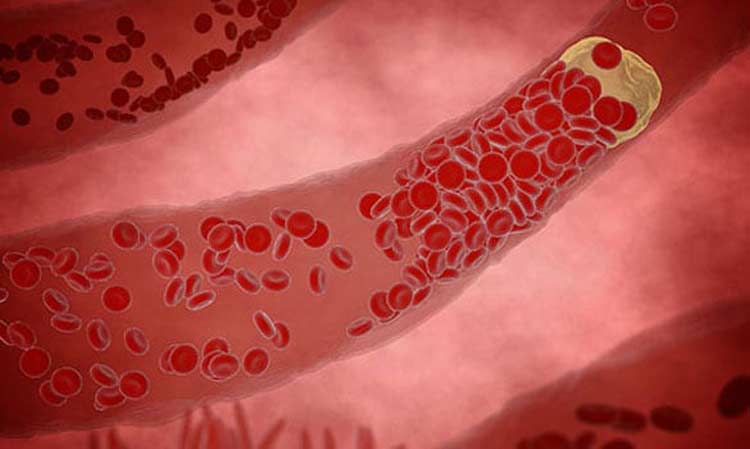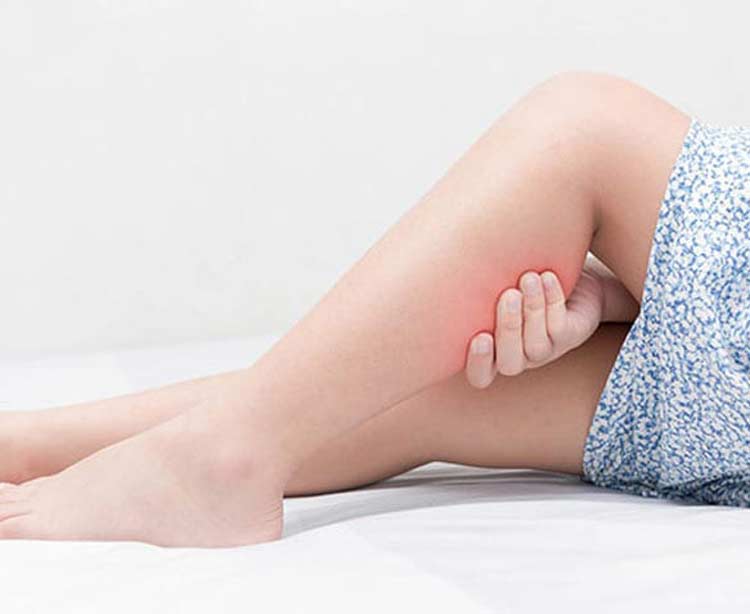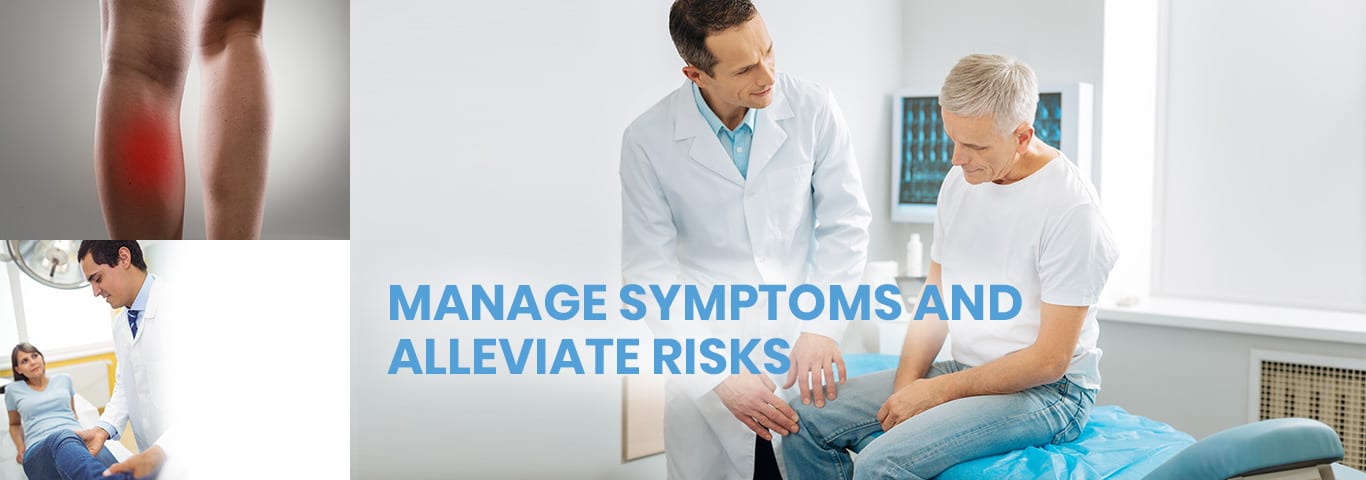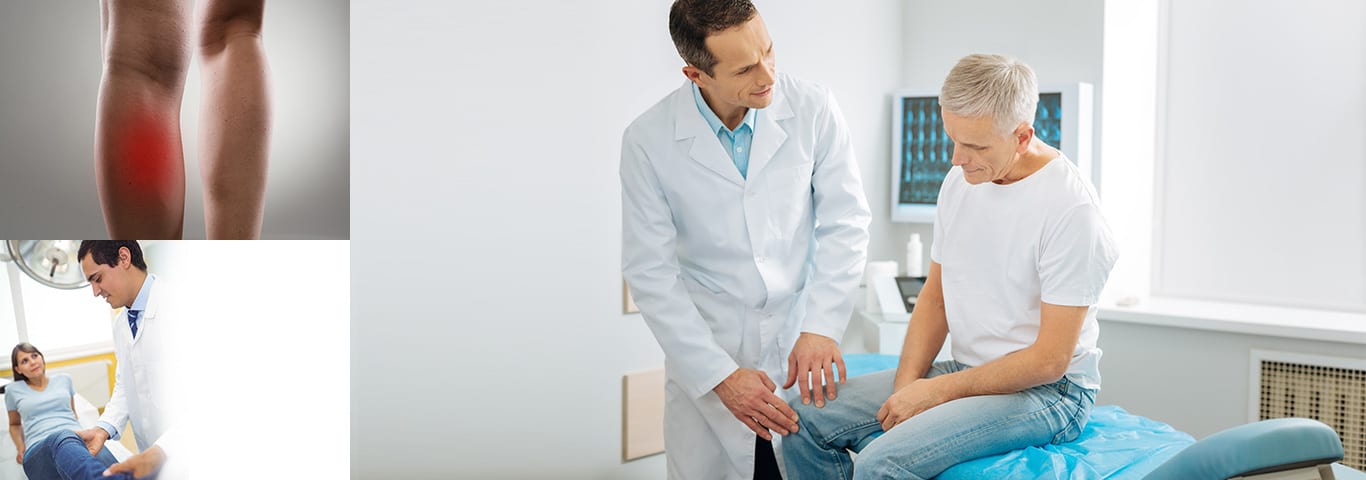
Discover how we can help you find relief from peripheral artery disease.
Peripheral artery disease, or PAD, can develop in individuals who suffer from atherosclerosis. Atherosclerosis is the buildup of plaque in the arteries. This buildup causes the arteries to stiffen and narrow, which leads to other complications. In the case of peripheral artery disease, it causes problems with circulation, most often in the legs.
- PAD increases your risk of developing coronary artery disease, stroke, heart attack, and transient ischemic attacks.
- In severe cases, circulation can become so impaired that gangrene may set in, potentially leading to the need for amputation.
Cause
Plaque is made up a variety of components in the blood, such as cholesterol, fat, calcium, and fibrous tissue. Over time this substance can deposit itself on the insides of the arteries, creating a buildup that not only slows the circulation of blood, but also stiffens the arteries. This can cause a variety of complications, including peripheral artery disease.
There are a variety of things that increase your risk of developing PAD. Smoking and obesity both increase your odds of developing the disease. Existing health conditions such as diabetes and high blood pressure also put you at an increased risk. Your odds of developing PAD also increase with age and a family history of the disease.


Symptoms
The most common symptom of PAD is numbness and pain in the affected area. Because the legs are the most common area affected by PAD, sharp calf pain, leg pain when you are walking, and pain while going up stairs are all common symptoms. Pain in other areas may also be a symptom of PAD, as the condition can also affect the arms, head, kidneys, and stomach. As PAD progresses, the pain in the affected area can become so severe that it is bothersome while resting, and even wake the individual up during the night.
Other symptoms of PAD include coldness in the affected area. For example, if your lower left leg is affected, that leg and foot may be noticeably colder to the touch than the other leg. Sores may also develop on the area. The circulation to the area is compromised, so wounds may develop more easily and take longer to heal. You may also notice the affected area develops hair loss, toenails on the affected foot may not grow as quickly, the skin may become shiny, and it may be difficult to feel your pulse in that area. Men may suffer from erectile dysfunction.
Treatment Options
The treatment for PAD is to treat the underlying atherosclerosis and to manage existing symptoms. There are a variety of ways to do this, and your doctor may choose to implement a multi-faceted approach. Lifestyle changes, medication, and surgery can all aid in the treatment of PAD.
The most important thing you can do in treating PAD is, if you smoke, stop. Exercise to help take off excess pounds are also an effective lifestyle change you can make. Your doctor can help you develop an exercise program that is both effective and minimizes your discomfort.
If you don’t already take a statin, or cholesterol-lowering drug, your doctor may prescribe one. For individuals with PAD, doctors would like LDL cholesterol levels below 100 milligrams per deciliter. Your doctor may want that number even lower if you have risk factors for a heart attack or diabetes or are a smoker. In addition to improving your PAD symptoms, statins can lower your risk for stroke and heart attack.
If your blood pressure is higher than 140 over 90, your doctor will probably want to prescribe a blood pressure medication. Likewise, if you have diabetes, you may need prescription medication to help control blood sugar. Finally, because PAD affects circulation, your doctor may recommend a daily aspirin or other blood thinner to prevent clots.
There are a few medications that can help treat the symptoms of PAD. They improve blood flow by widening blood vessels and thinning the blood. These medications can lead to side effects such as diarrhea and headache. If you experience side effects, talk to your doctor, switching medications may provide relief.
Surgery
Surgery may be necessary if lifestyle changes and medication do not relieve your PAD symptoms. Surgical options involve opening up the artery with a balloon and possibly inserting a stent to keep it open. Another option is for the surgeon to create a graft bypass, rerouting the blood supply around the blocked area.
PAD is a treatable illness. Many people feel that pain in their feet or legs are simply a side effect of the aging process. That is not the case. If you experience pain in your feet and legs, unexplained sores, or sores that are slow to heal, talk with your doctor.

